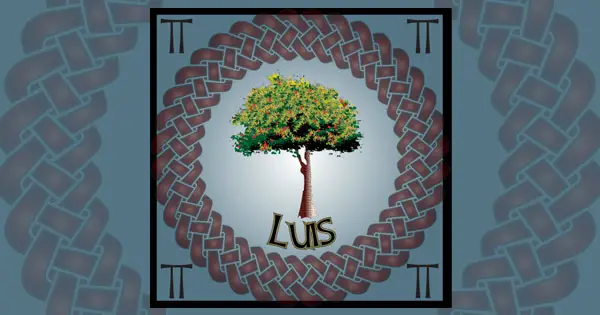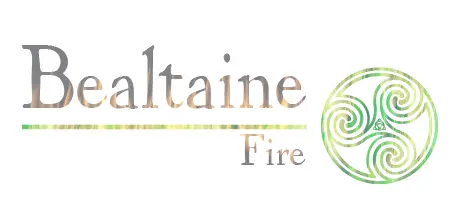The rowan tree was rich in meaning in ancient cultures. It was one of the most sacred trees to the Celtic Druids and to the Scots, who regarded it as so sacrosanct that it was forbidden to use any part of it except in very special religious ceremonies.
When the Vikings invaded Scotland they used the wood from rowan trees to make Runes, which were worn as amulets for protection from sorcery and the evil eye.
The Rowan tree (Sorbus aucuparia) belongs to the rose family. It is sometimes known as the mountain ash, though it is not related to the ash, and sometimes ‘The Lady of the Mountain’ due to its ability to thrive in inhospitable mountainous environments.
Its vibrant red berries, lush foliage, and distinctive bark make it easily recognizable. The Celts regarded it as the Protective Tree and often planted it near their homes as a safeguard and to attract good fortune.
The meaning of the rowan tree in mythology

Celtic mythology is rich with symbols deeply intertwined with the natural world. The rowan tree was believed to possess mystical properties and was associated with various deities and magical rituals.
It was considered a potent protector against malevolent forces and evil spirits. The Celts believed that the rowan possessed the power to ward off witches, fairies, and other supernatural beings. As a result, rowan branches were frequently used to create talismans, amulets, and protective charms, which were hung above doorways or worn as jewellery to safeguard against harm.
The Druids used rowan branches on funeral pyres as a symbol of death and rebirth. Rowan trees planted in cemeteries were said to protect the dead from evil spirits. They were also one of the nine sacred trees to be burned in the Beltane fires to symbolise new beginnings.
Rowans’ symbolic meaning in Goddess Brigid legend
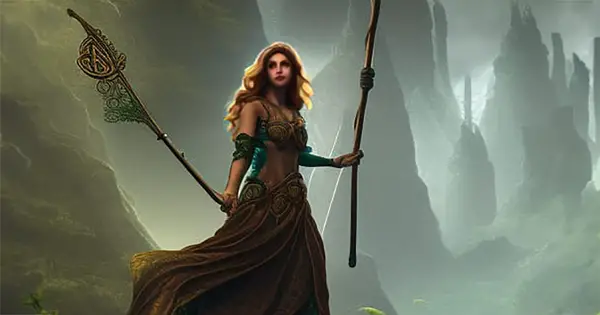
The rowan tree was closely associated with the Celtic goddess Brigid, who embodied aspects of healing, poetry, and craftsmanship.
Brigid was often depicted carrying a rowan staff, emphasizing the tree’s symbolic importance. It was believed to be a sacred tree in Brigid’s groves, where rituals and ceremonies dedicated to her were held.
The branches and berries were also used in divination practices, allowing seers and druids to gain insight into the future. It was believed that by carrying a rowan branch, a person could enhance their psychic abilities and ward off evil influences.
The rowan tree as a letter in the Ogham alphabet
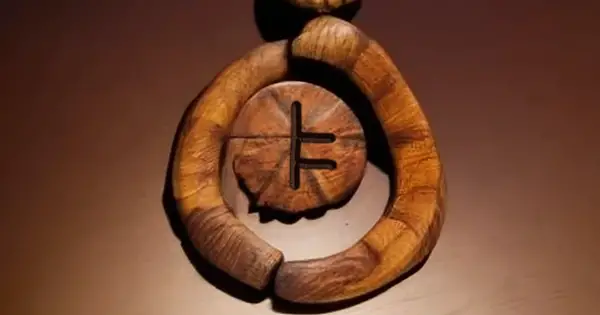
The rowan was one of the trees that made up the Ogham alphabet – the basic symbols the ancient Celts carved on to trees and stone to communicate.
The rowan is the second letter, ‘Luis’, in Ogham and the second month in the Celtic tree calendar. It symbolises protection in both Druid and Viking beliefs.
It’s uncertain how much information the Celts were able to communicate through Ogham, but the fact it was being used at all is seen as an indication that an organised society and government were being developed.
The wood of the rowan had many uses
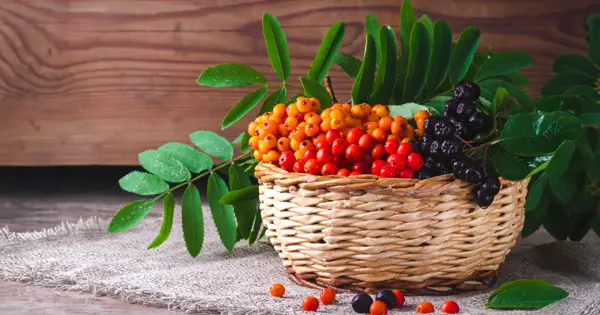
The rowan tree was often used to build cart wheels, boats and walking sticks, perhaps as a form of protection on a journey, and the bark of the rowan can be used as a powerful dye.
The tree was considered to have many medicinal qualities.
Rowan berries are quite bitter but not poisonous. When mixed with sugar they make nice jellies, jams juices and wines.
Eaten raw the seeds of the rowan berry can cause stomach upsets but the druids believed they could be turned into remedies for cleansing the kidneys and the blood, balancing the digestive system, strengthening the immune system and helping with a sore throat or bronchitis.
Those beliefs may not stand up to modern medical research but rowan berries do contain several vitamins and minerals, and more vitamin C than citrus fruits.
First woman ‘made from the rowan tree’

Apart from Brigid, the rowan tree had connections to other Celtic deities as well.
The rowan was also associated with the Welsh goddess Creiddylad, representing love and beauty.
In Irish mythology, the first woman was created from the rowan tree. It is a tree said to belong to the fairy folk who can be seen dancing in circles surrounded by rowan trees when the moon is full.
Rowan tree tattoos continue ancient traditions
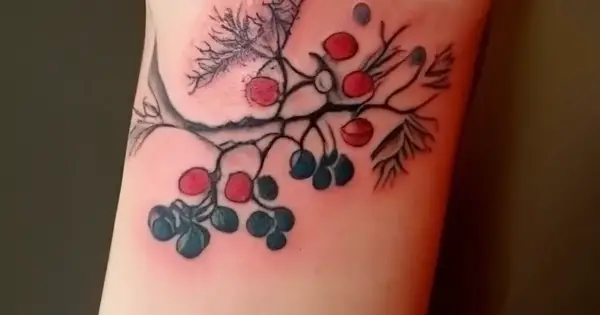
Rowan tree tattoos have gained popularity in recent years, partly because the tree continues to be seen as a symbol of strength and protection.
Rowan tattoos can also be seen as a tribute to nature and its connection to the spiritual world. Some enthusiasts use the tattoos to express their desire to maintain a harmonious relationship with the earth. Some see the rowan tree as a representation of resilience and inner strength, reminding them to stay grounded and face challenges with courage.
Others like the tree’s association with wisdom and enlightenment, seeking guidance and inspiration in their journey through life.
The intricate branches and delicate leaves of the rowan tree make for striking tattoo designs that can be customised to suit individual preferences.
The versatility of rowan tree tattoos allows for a range of artistic interpretations. From minimalist black ink designs to vibrant and detailed compositions, these tattoos can be tailored to reflect personal style and symbolism. Whether one chooses a small rowan branch on the wrist or an elaborate back piece featuring the entire tree, the beauty and significance of rowan tree tattoos are undeniable.

More on Celtic trees folklore
Alder tree in Celtic mythology – balanced between male and female
Ancient Irish language of ogham
Ireland Calling Videos
Check out the Ireland Calling YouTube Channel for more great videos like these.
